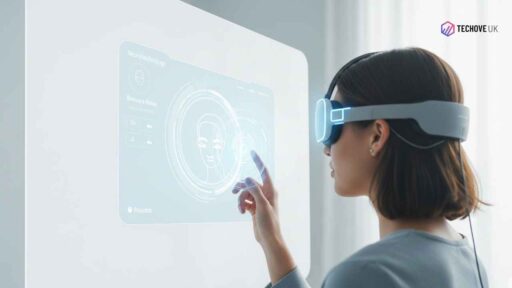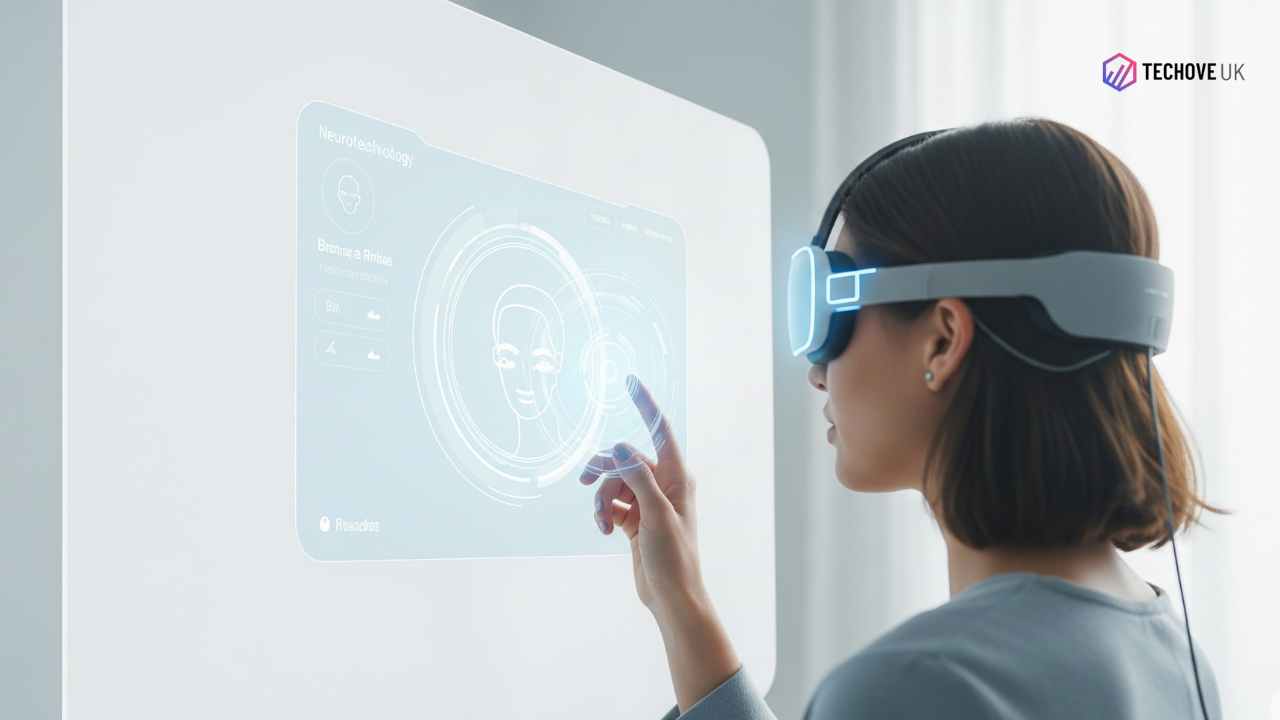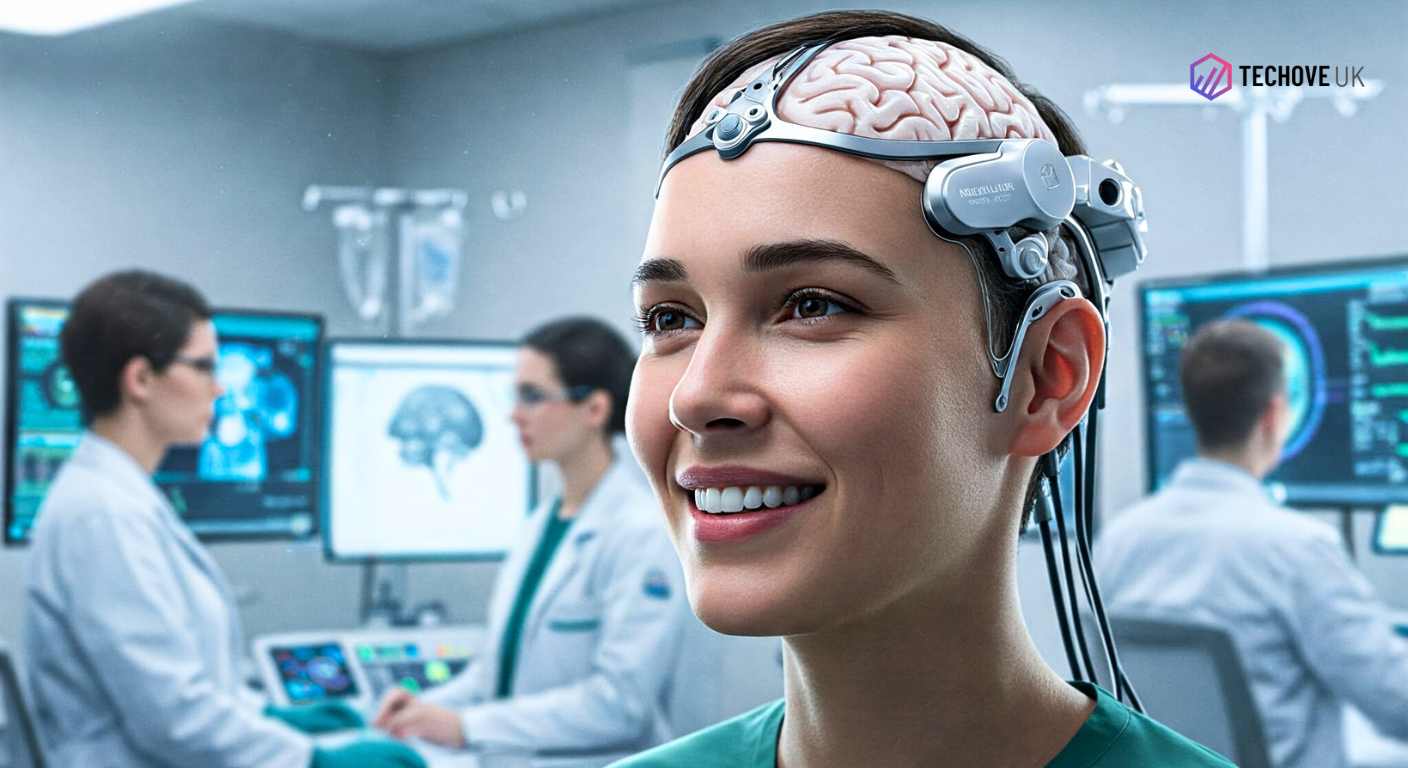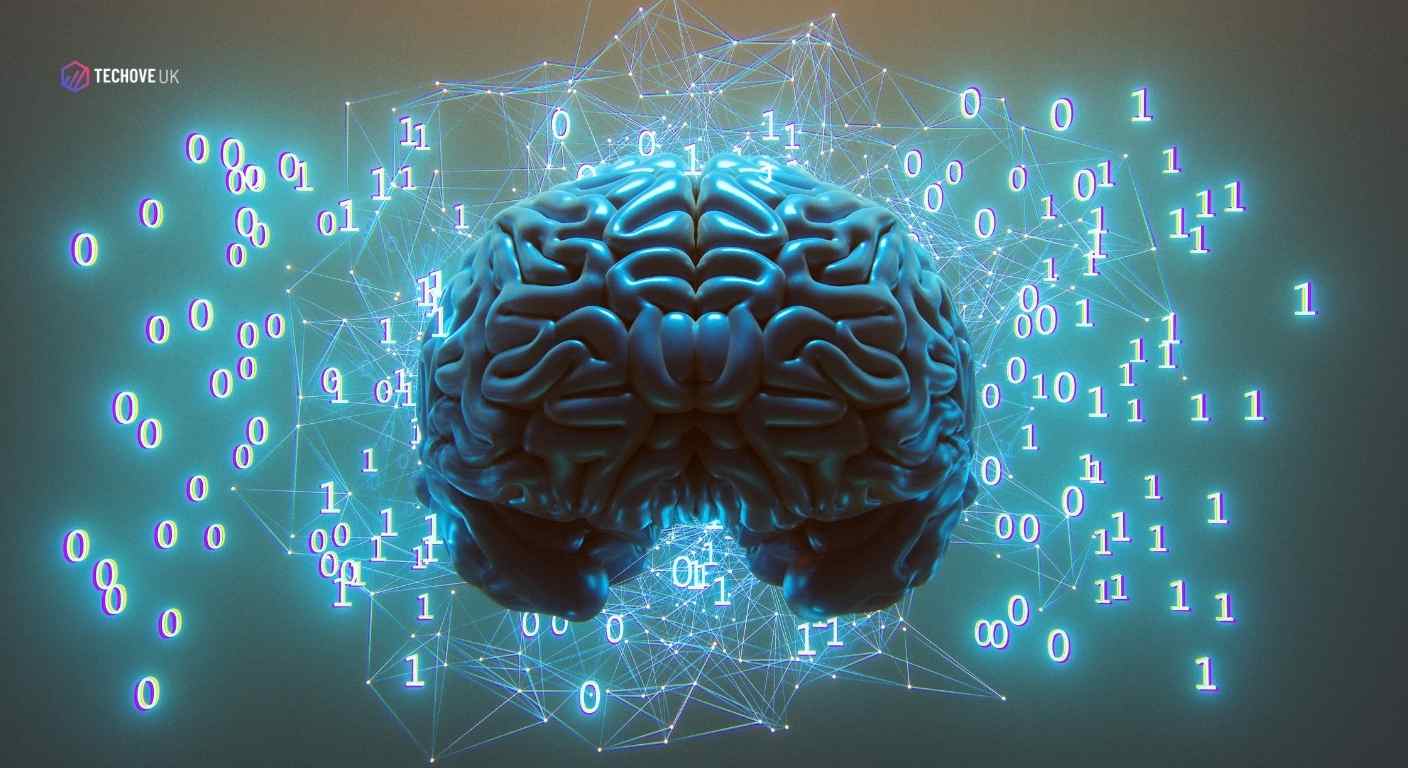Did you know that the average human brain generates between 50,000 and 70,000 thoughts per day? What if those thoughts, those fleeting sparks of imagination and intention, could directly interact with the world around you? This isn’t science fiction anymore. We’re standing on the cusp of a revolution, where neurotechnology is poised to redefine how we experience the digital and physical realms. But What Will Be the User Experience for Neurotechnology? How will our brains, the most complex organs known to humankind, seamlessly merge with the machines we create?
Neurotechnology is a fascinating field that builds bridges between our brains and external devices. Think of it as a translator, allowing our neural signals to communicate with computers, and vice versa. It’s about understanding, visualizing, and even influencing the intricate dance of electrical and chemical signals that make us who we are. This isn’t just about treating diseases; it’s about unlocking new possibilities for human interaction and capability.
How Our Brain Works: A Simple Explanation
Our brain is like a super-advanced computer, but instead of silicon chips, it uses billions of tiny cells called neurons. These neurons communicate with each other through electrical impulses and chemical messengers, forming vast networks. Every thought, every feeling, every movement you make is a result of these signals zipping around your brain. It’s a constant, dynamic conversation that allows us to perceive the world, learn, remember, and react. Neurotechnology taps into this conversation, either by listening in or by sending its own signals to influence the brain’s activity.
The Scope of Neurotechnology: Beyond the Clinic
While neurotechnology has its roots in medicine, helping people with conditions like Parkinson’s disease or paralysis, its reach is rapidly expanding. We’re talking about applications that go far beyond the hospital walls. Imagine controlling a drone with your mind, learning new skills at an accelerated pace, or even enhancing your focus during complex tasks. The scope is immense, touching areas from entertainment and education to communication and personal well-being. It’s about creating a more intuitive and responsive world, tailored to our individual mental states.
What is Neurotechnology Used For? A World of Possibilities
Neurotechnology is already being used in various ways, and its applications are growing by the day. Here are a few examples:
•Medical Treatments: Deep brain stimulation for Parkinson’s, prosthetic limb control for amputees, and devices to help restore sight or hearing.
•Enhanced Learning: Tools that monitor brain activity to optimize study habits or improve concentration.
•Gaming and Entertainment: Mind-controlled video games and virtual reality experiences that respond to your emotions.
•Communication: Brain-computer interfaces that allow individuals with severe paralysis to communicate by simply thinking.
•Mental Well-being: Neurofeedback systems that help manage stress, anxiety, and improve sleep patterns.
These are just a few glimpses into a future where our minds and technology work hand-in-hand, creating experiences that were once confined to the pages of science fiction. The real question is, are we ready for it?
The Five Elements of User Experience for Neurotechnology: A Symphony of Mind and Machine
Imagine trying to play a piano with oven mitts on. Clumsy, right? That’s how some technology can feel. But with neurotechnology, the goal is to remove those ‘mitts’ and create a seamless connection. The user experience in neurotechnology isn’t just about pretty screens; it’s about how well the technology understands and responds to your brain. Here are five key elements that shape this experience:
1. Brain-Computer Interfaces (BCIs): Your Thoughts, Their Commands
Have you ever wished you could just think something and have it happen? That’s the magic of Brain-Computer Interfaces, or BCIs. These amazing systems create a direct link between your brain and an external device. They work by picking up the electrical signals your brain produces when you think or intend to do something. For example, a person with paralysis might use a BCI to move a robotic arm just by imagining moving their own arm. The user experience here is all about direct control and intuitive interaction. It’s about making the technology feel like an extension of yourself, almost like a new limb.
2. Electroencephalography (EEG): Listening to Your Brain’s Song
Our brains are constantly humming with electrical activity, like a complex song. Electroencephalography, or EEG, is a way to listen to that song. EEG devices, often seen as caps with electrodes, measure these electrical signals from your scalp. They can tell us if you’re focused, relaxed, stressed, or even dreaming. In neurotechnology, this data is used to tailor experiences. If a game senses you’re getting frustrated, it might adjust its difficulty. If a learning app sees you’re losing focus, it could offer a break. The user experience here is about adaptive design and personalized feedback, making the technology respond to your mental state.
3. Eye-Tracking Technology: Where Your Gaze Leads
Where do your eyes go when you’re looking at a new website? What catches your attention first? Eye-tracking technology answers these questions. It monitors your eye movements, showing exactly where you’re looking and for how long. This might seem simple, but it’s incredibly powerful for understanding user experience. Designers can use this information to place important buttons or information where your eyes naturally fall. In neurotechnology, eye-tracking can be combined with other sensors to create even more responsive interfaces. The user experience is about visual intuition and efficient navigation, making sure the most important things are always in your line of sight.
4. Neurofeedback Systems: Training Your Brain for Better Performance
Imagine being able to train your brain to be calmer, more focused, or even more creative. That’s what neurofeedback systems aim to do. These systems show you your own brain activity in real-time, often through a game or a visual display. When your brain produces the desired brainwave patterns (like those associated with relaxation), you get a reward in the game. Over time, your brain learns to produce those patterns more easily. For users, this means a chance to self-regulate and improve cognitive functions. It’s like having a personal brain coach, guiding you towards a better mental state.
5. Biometric Sensors: The Body’s Emotional Language
Our bodies often give away our feelings, even when we try to hide them. Our heart rate speeds up when we’re excited, our skin might get clammy when we’re nervous, and our facial expressions change with every emotion. Biometric sensors measure these physical responses. While not directly brain-based, they provide crucial context for neurotechnology. When combined with brain data, they paint a fuller picture of your emotional state and reactions. This allows neurotechnology to create experiences that are not just smart, but also emotionally intelligent and holistic, responding to both your thoughts and your feelings.
These five elements, working together, are building a future where technology doesn’t just react to our clicks and touches, but truly understands our inner world. It’s a future where the user experience is deeply personal, intuitive, and incredibly powerful.
Real-World Applications and Case Studies: Neurotechnology in Action
It’s easy to talk about brain waves and sensors in theory. But how is neurotechnology actually changing lives right now? Let’s look at some powerful examples. These stories show how these advanced tools are making a real difference.
Restoring Movement: The Power of Thought
Imagine being unable to move your arm, but then, with just a thought, you can pick up a cup of coffee. This is a reality for some individuals thanks to advanced BCIs. For example, a patient named Nathan Copeland, who was paralyzed, used a brain implant to control a robotic arm. He could even feel sensations through the arm, like the warmth of someone’s hand. This isn’t just about moving an object; it’s about regaining independence and a sense of connection to the world.
Enhancing Focus: A Student’s Secret Weapon
Think about a student struggling to concentrate during long study sessions. Neurofeedback systems are being explored to help with this. A student might wear an EEG headset while studying. The system gives them real-time feedback on their brain activity. When their brain enters a focused state, they might hear a pleasant sound or see a visual reward. Over time, they learn to consciously guide their brain into that focused state, improving their learning efficiency. It’s like training a muscle, but for your mind.
Gaming with Your Mind: The Ultimate Immersion
Video games are already immersive, but what if you could control them with your thoughts? Companies are developing games where your brain activity influences the gameplay. Imagine a horror game where your fear response, measured by biometric sensors, makes the monsters appear scarier. Or a puzzle game where your concentration levels unlock new clues. This takes gaming to a whole new level, making the experience deeply personal and responsive to your inner state. It blurs the lines between player and game.
Communication Beyond Words: A Voice for the Voiceless
For individuals who cannot speak or move, communication can be a huge challenge. Neurotechnology offers a beacon of hope. BCIs are being developed that allow people to type on a screen or even generate speech just by thinking about the letters or words. This gives a voice to those who were previously unable to express themselves. It’s a profound example of how technology can restore fundamental human connections and dignity.
Driving Safer: Your Brain as a Co-Pilot
Could your car know if you’re getting sleepy before you do? Eye-tracking technology is already being used in some vehicles to monitor driver alertness. If your eyes start to droop or your gaze wanders too much, the car can alert you. In the future, this could be combined with EEG to detect fatigue even earlier. This application isn’t about controlling the car with your mind, but about using neurotechnology to make our roads safer by understanding the driver’s cognitive state. It’s a subtle yet powerful way neurotechnology can enhance everyday safety.
These examples highlight the incredible potential of neurotechnology. From restoring lost abilities to creating entirely new forms of interaction, the impact on user experience is transformative. It’s about making technology more human, more responsive, and ultimately, more helpful.
The Role of a Neuro Technologist: Architects of the Mind-Machine Frontier
With such powerful technology emerging, who are the people making it all happen? Enter the neuro technologist. This isn’t a job for just anyone; it requires a unique blend of scientific understanding, technical skill, and a deep appreciation for the human element. Think of them as the architects and engineers of this new mind-machine frontier.
What Does a Neuro Technologist Do?
A neuro technologist is a professional who works directly with neurotechnology, often in clinical, research, or development settings. Their day-to-day tasks can vary widely, but generally involve:
•Operating and maintaining neurotechnology equipment: This includes setting up EEG machines, BCIs, and other sensors, ensuring they are calibrated correctly and functioning optimally.
•Collecting and analyzing brain data: They are skilled in recording neural signals and often use specialized software to interpret this complex data. This is crucial for understanding how a user’s brain is responding to the technology.
•Assisting in diagnosis and treatment: In medical settings, they work alongside doctors to perform tests that help diagnose neurological conditions or monitor the effectiveness of treatments like deep brain stimulation.
•Developing and testing new neuro-interfaces: In research and development, they might be involved in designing and refining the next generation of neurotechnological devices, focusing on making them more user-friendly and effective.
•Ensuring patient safety and comfort: When working with individuals, especially those with medical conditions, they are responsible for ensuring the safe and comfortable application of neurotechnology.
Importance in Shaping User Experience
The neuro technologist plays a vital role in shaping the user experience of neurotechnology. They are often the direct link between the complex science and the human user. Their expertise ensures that:
•The technology is used effectively: They know how to get the clearest brain signals and how to interpret them accurately, which is essential for the technology to work as intended.
•User comfort is prioritized: Wearing a headset or having sensors attached can be uncomfortable. Neuro technologists are trained to minimize discomfort and ensure a positive physical experience.
•Feedback is translated into improvements: They observe user reactions, gather feedback, and often work with designers and engineers to refine the technology based on real-world use. They can spot when a BCI isn’t responding as intuitively as it should, or when a neurofeedback system isn’t engaging the user.
•Ethical considerations are upheld: They are often on the front lines of ensuring that neurotechnology is used responsibly and ethically, respecting user privacy and autonomy.
Without skilled neuro technologists, the promise of neurotechnology would remain largely unfulfilled. They are the unsung heroes who bridge the gap between cutting-edge science and practical, beneficial user experiences. Their work ensures that these powerful tools are not just technologically advanced, but also human-centered.
Navigating the Future: Risks and Ethical Considerations
As exciting as neurotechnology is, it also brings up some big questions and concerns. Just like any powerful tool, it can be used for good, but it also has potential downsides. It’s crucial to think about these challenges now, before the technology becomes even more widespread. We need to make sure that as we advance, we do so responsibly and ethically.
What Are the Risks of Neurotechnology?
The risks associated with neurotechnology aren’t just about technical glitches; they touch on fundamental aspects of what it means to be human. Here are some key concerns:
•Privacy of Brain Data: Imagine a device that can read your thoughts or emotional states. This kind of data is incredibly personal and sensitive. Who owns this data? How will it be protected from hackers or misuse? The potential for companies or governments to access and exploit our neural information is a serious privacy concern. As one expert put it, “Because neurotechnologies can collect sensitive neural information, there is a significant risk to privacy” [9].
•Security Vulnerabilities: If neurodevices are connected to the internet, they could be vulnerable to cyberattacks. A hacked brain implant could have devastating consequences, potentially affecting a person’s motor control, cognitive functions, or even their mood. The idea of someone remotely manipulating your brain is a chilling thought, highlighting the need for robust security measures.
•Loss of Autonomy and Free Will: If neurotechnology can influence our thoughts, decisions, or emotions, could it erode our sense of free will? What if a device is designed to make us more compliant, or to influence our purchasing decisions without our conscious awareness? This raises profound questions about human agency and control over our own minds. UNESCO has highlighted this, stating, “Neurotechnology could affect our brain and thus our freedom of thought, decision-making and action” [11].
•Exacerbating Social Inequalities: If advanced neurotechnology is expensive, it could create a divide between those who can afford cognitive or physical enhancements and those who cannot. This could worsen existing social inequalities, creating a new form of ‘neuro-divide’ where access to enhanced capabilities is limited to a privileged few. This concern was raised by the GCSP, noting that such technologies “risk exacerbating social inequalities” [12].
•Misuse and Dual-Use Potential: Like many technologies, neurotechnology has dual-use potential – it can be used for both beneficial and harmful purposes. While it can treat diseases, it could also be used for surveillance, manipulation, or even in military applications. Ensuring that the technology is used for ethical purposes requires careful regulation and oversight.
Ethical Considerations: A Moral Compass for Innovation
Beyond the direct risks, there are broader ethical considerations that need to guide the development and deployment of neurotechnology. These are not easy questions, and they require ongoing discussion among scientists, ethicists, policymakers, and the public:
•Informed Consent: How can individuals give truly informed consent for neurotechnological interventions, especially when the technology is complex and its long-term effects are unknown? This is particularly challenging when dealing with vulnerable populations or those with impaired cognitive abilities.
•Identity and Personhood: If our brains are modified or enhanced by technology, how does that affect our sense of self and identity? Does a brain implant change who we are? These philosophical questions become very real in the context of neurotechnology.
•Therapy vs. Enhancement: Where do we draw the line between using neurotechnology to treat a medical condition (therapy) and using it to enhance normal human capabilities (enhancement)? Is it ethical to enhance memory, intelligence, or emotional regulation? And if so, who decides what constitutes an ‘enhancement’ and who gets access to it?
•Accountability and Responsibility: If a neurodevice malfunctions or causes harm, who is responsible? The developer, the doctor, the user? Clear lines of accountability are needed as these technologies become more integrated into our lives.
Navigating these complex risks and ethical dilemmas requires careful thought, open dialogue, and proactive regulation. The goal is to harness the incredible potential of neurotechnology while safeguarding human rights, dignity, and well-being. It’s a delicate balance, but one that is essential for a future where mind and machine can truly coexist for the benefit of all.
Table: Neurotechnology Applications and Their UX Impact
To better understand the diverse landscape of neurotechnology and its impact on user experience, let’s look at a detailed breakdown of various applications, their primary function, and how they specifically influence the user’s interaction and perception.
| Neurotechnology Application | Primary Function | User Experience Impact | Key UX Considerations |
| Brain-Computer Interfaces (BCIs) | Direct communication between brain and external devices (e.g., controlling prosthetics, cursors). | Empowerment & Control: Users gain direct control over technology through thought, leading to a profound sense of agency and independence. | Intuitiveness: How natural does the thought-to-action feel? Responsiveness: How quickly and accurately does the device react? Learning Curve: How easy is it for users to master control? |
| Electroencephalography (EEG) | Measures electrical activity in the brain to assess cognitive states (e.g., focus, relaxation, stress). | Personalization & Adaptation: Technology can adapt to the user’s mental state, offering tailored experiences (e.g., adjusting game difficulty, optimizing learning content). | Accuracy: How reliably does the EEG interpret brain states? Feedback Clarity: Is the feedback provided to the user easy to understand and act upon? Comfort: Is the headset or device comfortable for extended wear? |
| Eye-Tracking Technology | Monitors eye movements to understand attention, interest, and intent. | Efficiency & Intuition: Interfaces become more efficient by responding to gaze, reducing the need for manual input. Visual design can be optimized for natural eye flow. | Precision: How accurately does it track gaze? Integration: How seamlessly does eye-tracking integrate with other input methods? Privacy: Concerns about data collected from eye movements. |
| Neurofeedback Systems | Provides real-time feedback on brain activity, allowing users to self-regulate and train their brain. | Self-Improvement & Engagement: Users actively participate in improving their cognitive or emotional states, leading to a sense of accomplishment and deeper engagement. | Motivation: Is the feedback system engaging enough to sustain user interest? Guidance: Is the user adequately guided on how to modify their brain activity? Transferability: Can learned skills be applied outside the system? |
| Biometric Sensors | Measures physiological responses (e.g., heart rate, skin conductance, facial expressions) to infer emotional states. | Emotional Intelligence & Context: Technology gains a richer understanding of the user’s emotional context, leading to more empathetic and responsive interactions. | Reliability: How accurately do physiological signals reflect emotions? Privacy: Sensitivity of emotional data. Non-Intrusiveness: Are the sensors comfortable and unobtrusive? |
| Transcranial Magnetic Stimulation (TMS) | Uses magnetic fields to stimulate or inhibit brain activity, often for therapeutic purposes (e.g., depression). | Therapeutic Relief & Cognitive Enhancement (potential): Users may experience symptom reduction or improved cognitive function. UX is primarily clinical, focusing on patient comfort and treatment efficacy. | Safety: Ensuring no adverse side effects. Comfort: Minimizing discomfort during stimulation. Perceived Efficacy: How well does the user feel the treatment is working? |
| Optogenetics | Uses light to control genetically modified neurons, primarily in research to understand brain circuits. | Research & Understanding (indirect UX): While not a direct user experience for the general public yet, it provides fundamental insights that will eventually lead to more effective and precise neurotechnologies. | Ethical Implications: High ethical considerations due to genetic modification and brain control. Long-term Effects: Unknown long-term impacts on brain function. |
This table illustrates that the user experience in neurotechnology is multifaceted, extending beyond simple interface design to encompass physiological comfort, emotional response, and the profound psychological impact of interacting directly with one’s own brain. As the field evolves, understanding these nuances will be critical for creating truly beneficial and human-centered neurotechnologies.
Addressing Common Questions: Clearing the Neuro-Fog
As neurotechnology continues to evolve, it’s natural to have questions. Let’s tackle some common ones that often come up, providing clarity on specific applications and global initiatives.
Which Neurotechnology is Used to Treat PD?
When it comes to Parkinson’s Disease (PD), a progressive disorder that affects movement, Deep Brain Stimulation (DBS) is a prominent neurotechnology used for treatment. DBS involves surgically implanting electrodes in specific areas of the brain. These electrodes are connected to a small device, similar to a pacemaker, implanted under the skin in the chest.
This device sends continuous electrical pulses to the brain, which helps to block the abnormal brain signals that cause many of the motor symptoms of PD, such as tremors, rigidity, and slowness of movement. While it doesn’t cure PD, DBS can significantly improve a patient’s quality of life by reducing symptoms and allowing them to perform daily activities more easily. It’s a powerful example of how neurotechnology can directly intervene to improve neurological function.
What is the International Program for Advancement of Neurotechnology?
International Program for Advancement of Neurotechnology, there are several significant international collaborations and organizations dedicated to advancing the field responsibly. These initiatives often focus on research, ethical guidelines, and fostering innovation.
One notable example is NeuroTechX, a global non-profit organization that aims to facilitate the advancement of neurotechnology by providing resources, learning opportunities, and a community for enthusiasts and professionals. They have chapters around the world, promoting collaboration and knowledge sharing.
Another crucial effort comes from organizations like UNESCO, which is actively working on developing global ethical guidelines for neurotechnology. This isn’t a program in the traditional sense, but a vital international initiative to ensure that neurotechnology develops in a way that respects human rights, privacy, and dignity. Their work involves bringing together experts from various fields and countries to create a framework for responsible innovation.
Additionally, many international research collaborations and academic consortia contribute to the advancement of neurotechnology. These often involve universities and research institutions from different countries pooling their expertise and resources to tackle complex challenges in neuroscience and engineering. For instance, the International Brain Initiative is a collaborative effort involving many countries to coordinate brain research efforts globally.
So, while there isn’t one single ‘International Program for Advancement of Neurotechnology,’ the field is indeed being advanced through a rich tapestry of global collaborations, ethical discussions, and dedicated organizations working to push the boundaries of what’s possible while ensuring responsible development.
Conclusion: A New Era of Human-Technology Interaction
We’ve journeyed through the exciting world of neurotechnology, from understanding how our brains work to exploring the incredible ways technology is beginning to interact with our minds. We’ve seen how the user experience is being reshaped by innovations like BCIs, EEG, eye-tracking, neurofeedback, and biometric sensors, creating interactions that are more intuitive, personalized, and deeply responsive to our inner states.
Neurotechnology isn’t just about treating diseases; it’s about unlocking new human potential, enhancing our abilities, and creating a future where technology feels less like a tool and more like an extension of ourselves. From helping paralyzed individuals regain movement to making learning more efficient and entertainment more immersive, the applications are vast and transformative.
However, with great power comes great responsibility. We’ve also delved into the critical risks and ethical considerations that come with this powerful technology – concerns about privacy, security, autonomy, and social equality. These aren’t just academic debates; they are real challenges that require careful thought, open dialogue, and proactive measures from all of us.
The role of the neuro technologist, the dedicated professional who bridges the gap between complex science and human application, will be more crucial than ever in shaping this future. They are the guardians of the user experience, ensuring that these powerful tools are developed and deployed with humanity at their core.
So, what will be the user experience for neurotechnology? It will be a journey into uncharted territory, a profound shift in how we interact with the world and with ourselves. It will be a future where our thoughts can move mountains, where our emotions can shape our digital environments, and where the line between human and technology becomes beautifully, intricately blurred. Are we ready to embrace this new era of human-technology interaction, with all its promise and its challenges? The conversation has just begun.
References
[1] Meegle. (2025, June 26). Neurotechnology For User Experience. https://www.meegle.com/en_us/topics/brain-implants/neurotechnology-for-user-experience
[2] Iberdrola. Neurotechnology: what it is, applications. https://www.iberdrola.com/innovation/neurotechnology
[3] IEEE Brain. Neurotechnologies: The Next Technology Frontier. https://brain.ieee.org/topics/neurotechnologies-the-next-technology-frontier/
[4] Technology Networks. (2022, February 11). Neurotechnology. https://www.technologynetworks.com/neuroscience/articles/neurotechnology-358488
[5] Mayo Clinic. How your brain works. https://www.mayoclinic.org/diseases-conditions/epilepsy/in-depth/brain/art-20546821
[6] Johns Hopkins Medicine. Brain Anatomy and How the Brain Works. https://www.hopkinsmedicine.org/health/conditions-and-diseases/anatomy-of-the-brain
[7] Nuffield Council on Bioethics. (2024, October 3). Literature Review: Neurotechnology. https://www.nuffieldbioethics.org/wp-content/uploads/Neurotechnology-Literature-Review-WEB-FINAL.pdf
[8] AIMS Education. (2025, February 14). What To Know: Neurodiagnostic Technologists. https://aimseducation.edu/blog/neurodiagnostic-technologist-salaries-and-jobs
[9] Australian Human Rights Commission. (2024, March 12). Neurotechnology and Human Rights. https://humanrights.gov.au/our-work/technology-and-human-rights/projects/neurotechnology-and-human-rights
[10] New America. The Rise of Neurotech and the Risks for Our Brain Data. https://www.newamerica.org/future-security/reports/the-rise-of-neurotech-and-the-risks-for-our-brain-data/privacy-and-security-challenges/
[12] Geneva Centre for Security Policy. (2022, April 11). In focus: The challenges of neurotechnology. https://www.gcsp.ch/news/focus-challenges-neurotechnology
[15] Parkinson’s Foundation. Deep Brain Stimulation (DBS).





